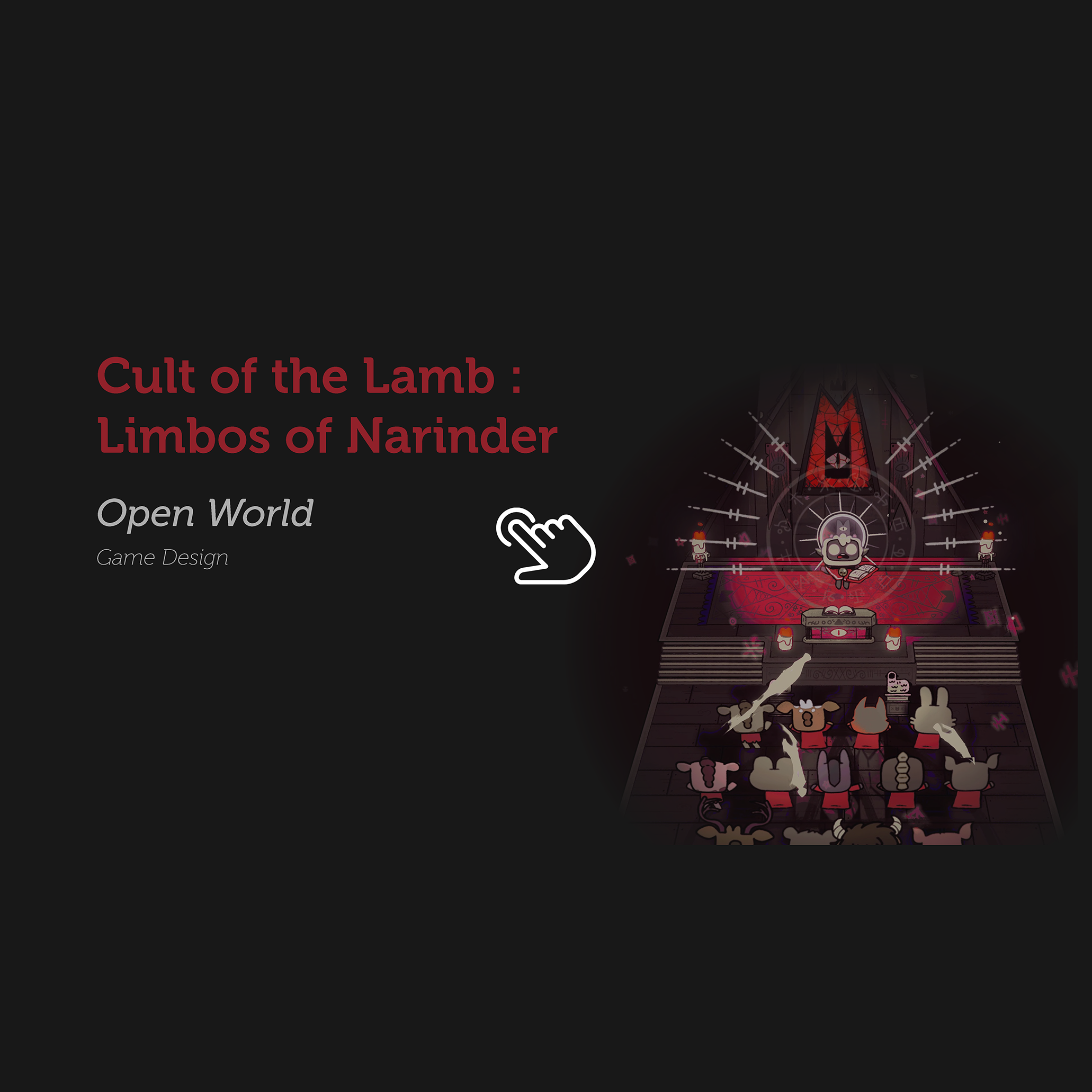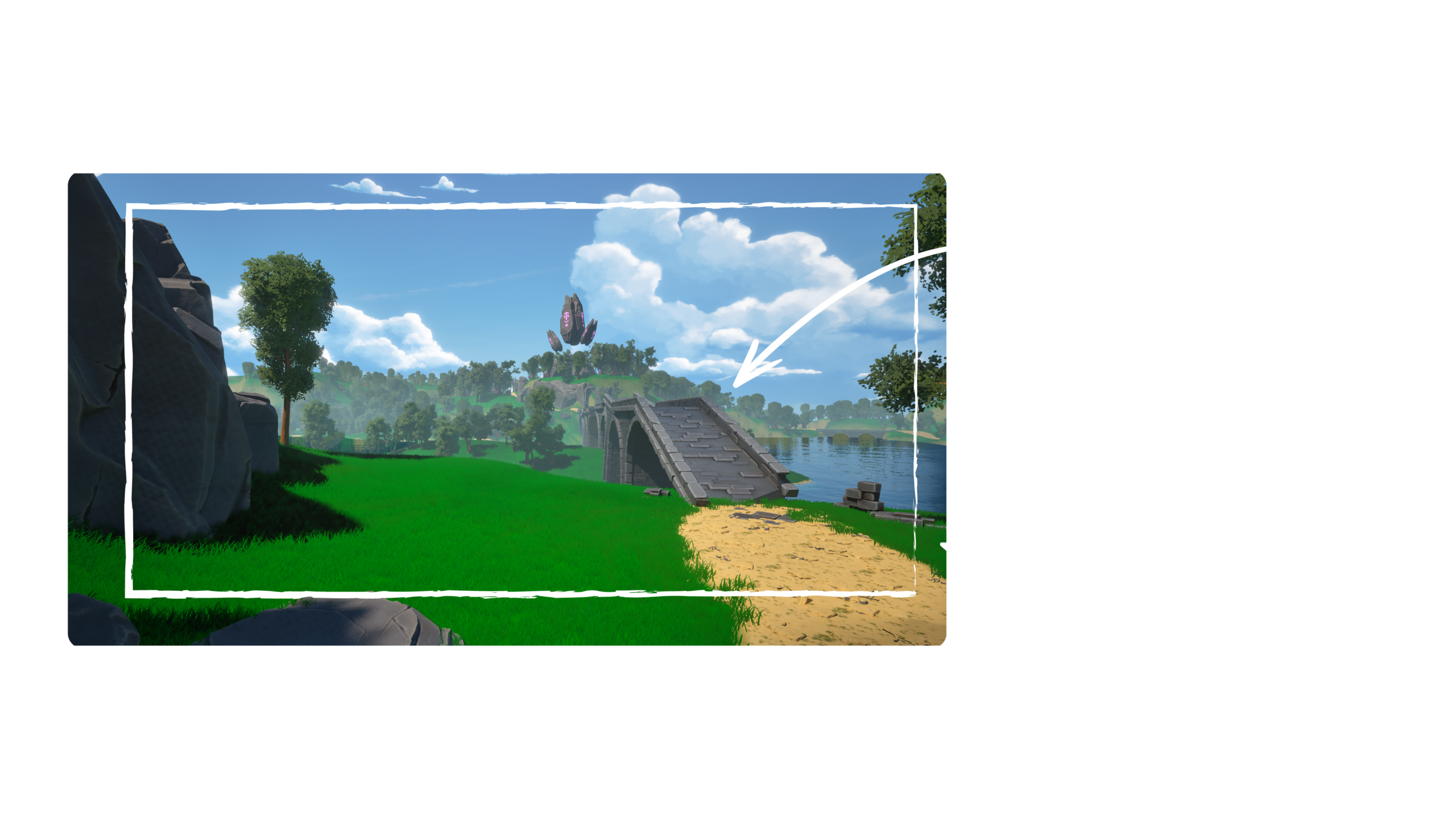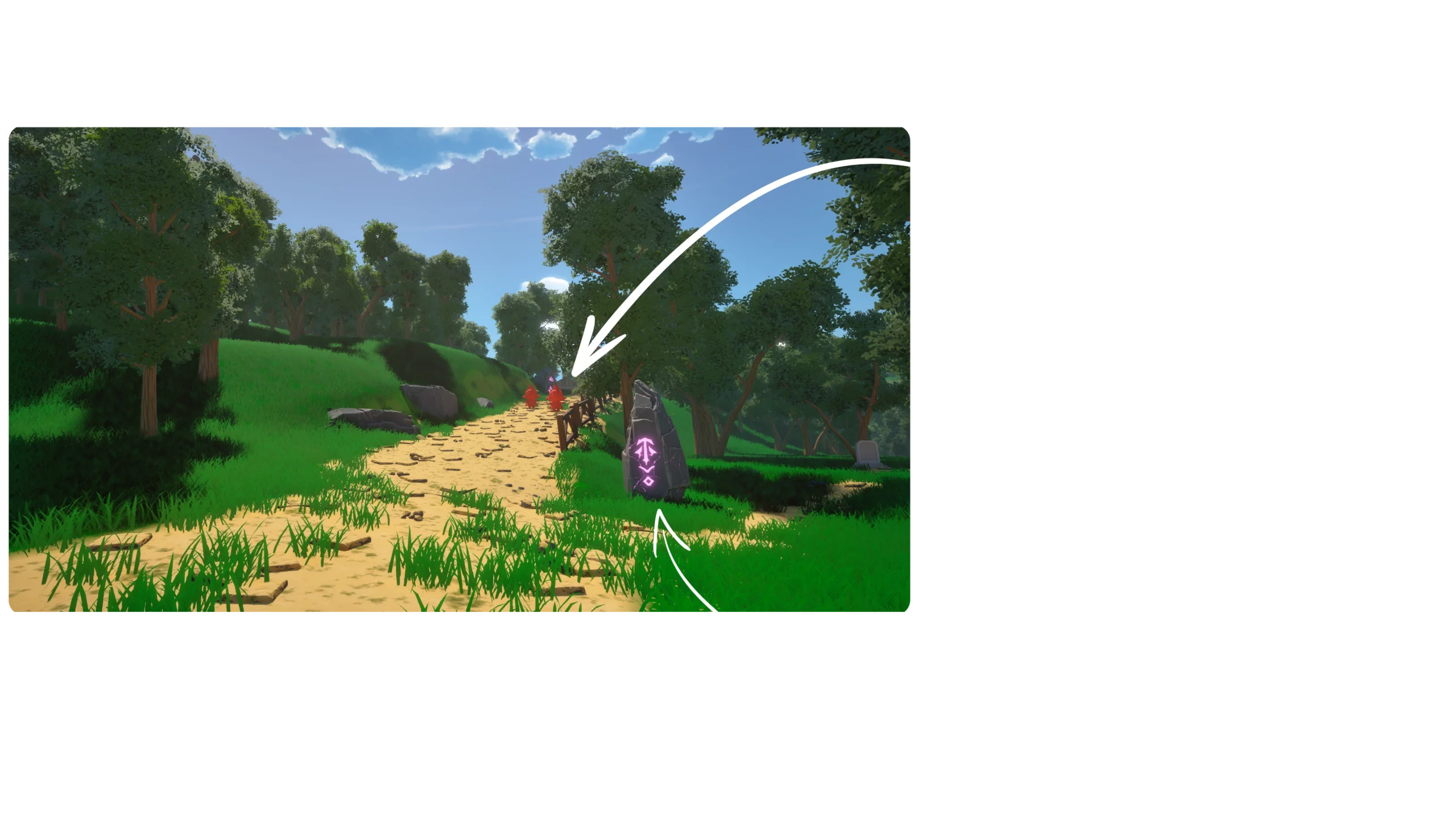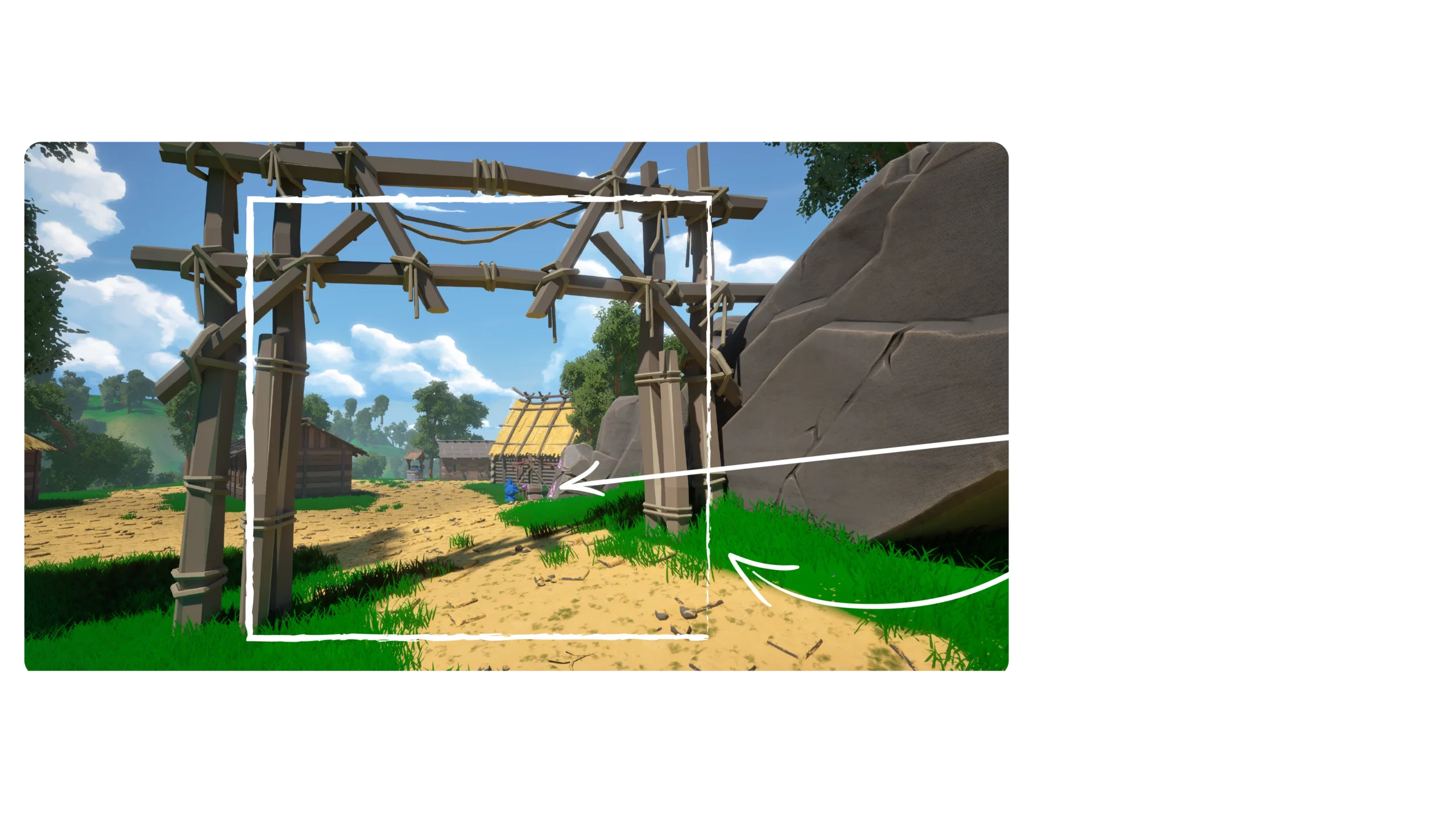Limbos Of Narinder
Info:
Project Type: Video Game
Year: 2024
Context: School Project
Team: Solo
Platform: For PC using Unreal Engine 5.3
Role in the Project:
Level Designer – Game Designer
Description:
Limbos of Narinder started as a game design and level design exercise aimed at transforming an existing title into an open world experience.
The project unfolded in two main phases: first, the creation of a design document detailing the key choices and structural changes required to make the game fit an open world structure; second, the development of a prototype level featuring a landmark, three access paths, several points of interest, and environmental cues to guide the player.
Origins of Limbos of Narinder:
This project was originally conceived as an academic exercise. I chose to adapt Cult of the Lamb into an open world format due to its rich lore and gameplay, which offered strong potential for expansion.
I envisioned Limbos of Narinder as a prequel to the original game, with Narinder one of its divine characters taking center stage. The player would follow Narinder through a mystical land, exploring hostile territories and expanding his influence.
To stay true to the original game’s spirit, I designed a cult management system embedded into the open world. This design challenge drew inspiration from franchises like Assassin’s Creed, while also deepening the management systems to reflect the identity of Cult of the Lamb.
Les différentes phases de production :
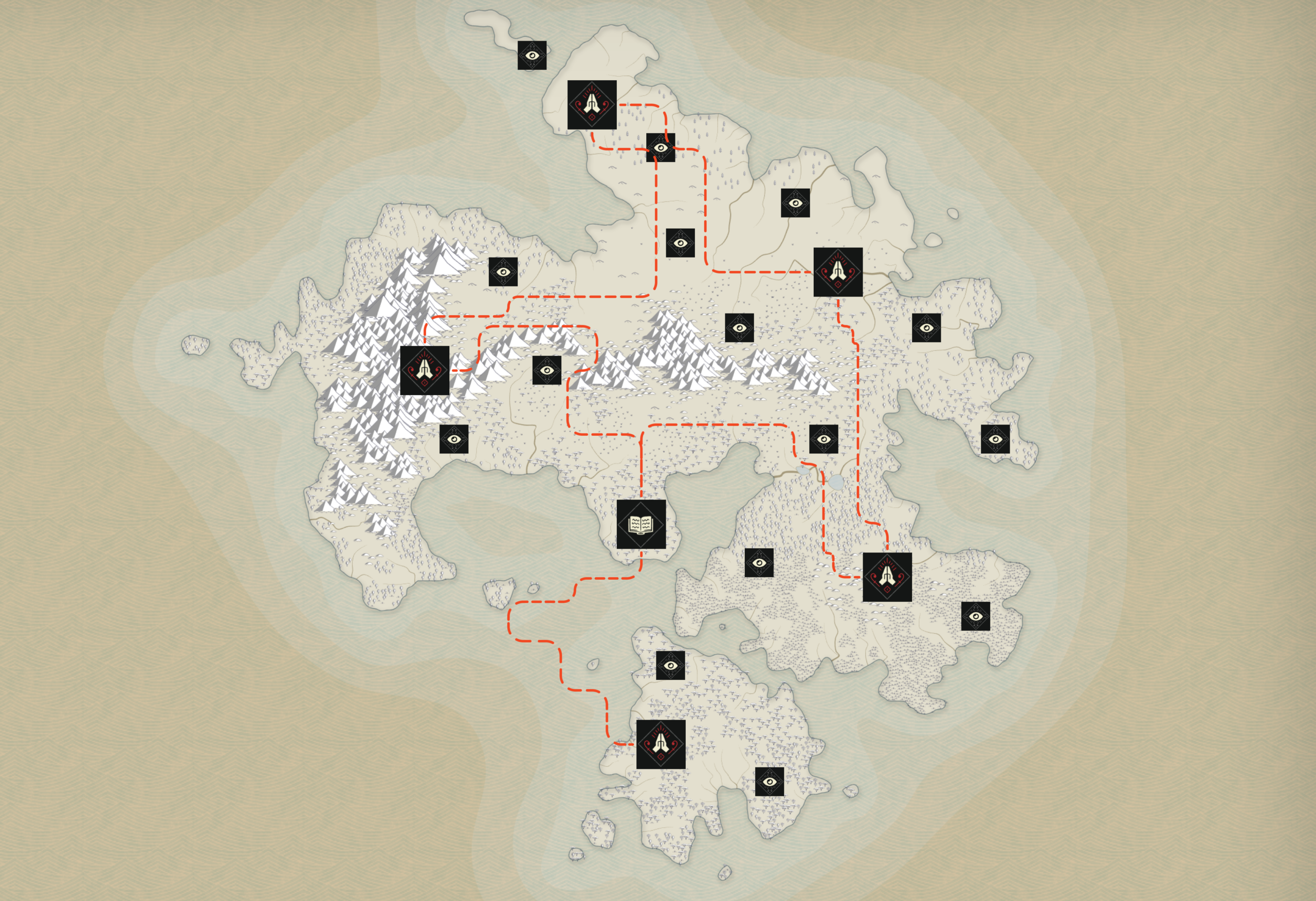
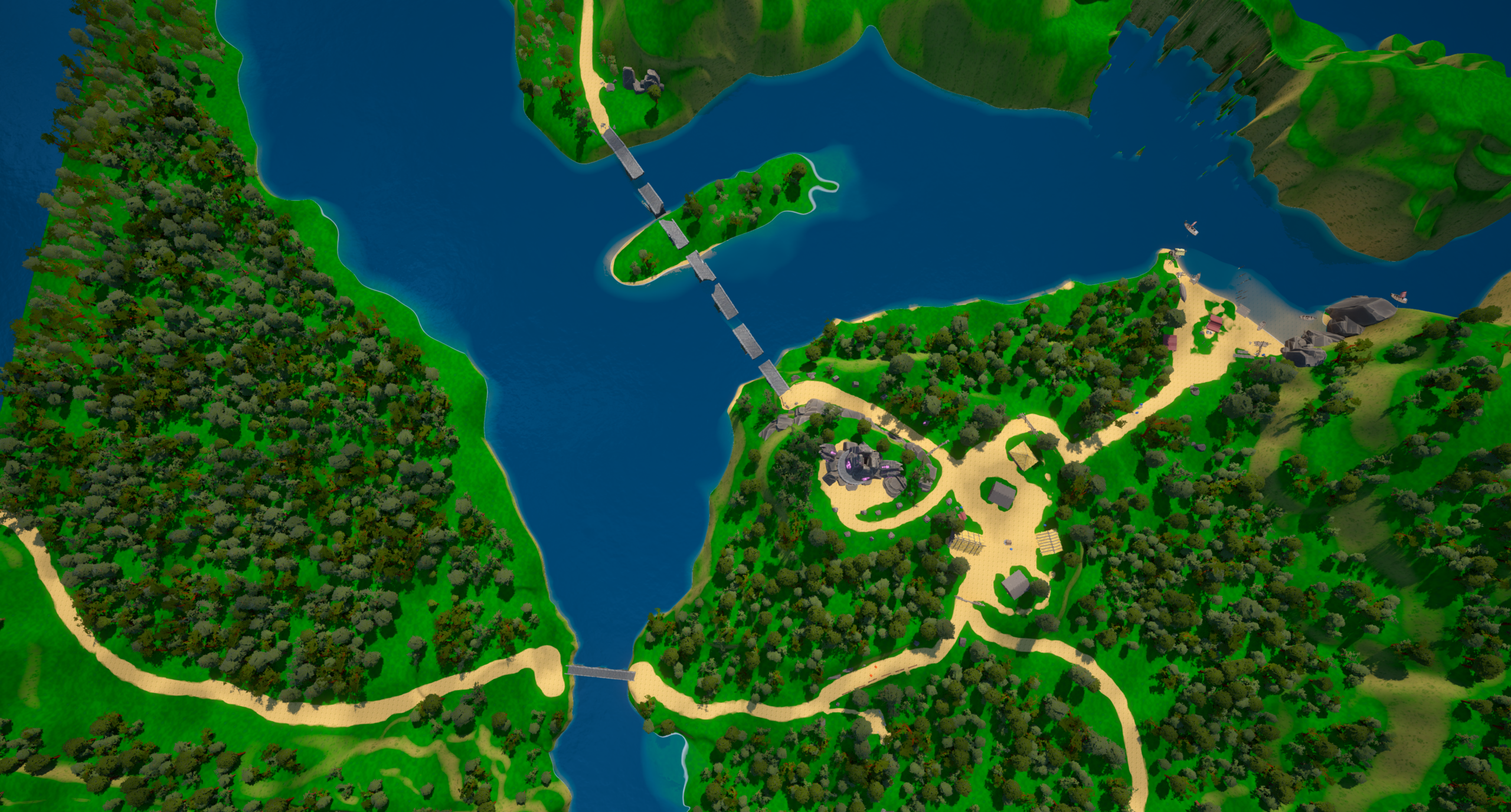
Once the design document was complete, the next step was to create a game zone within this open world, featuring a landmark and three distinct access routes.
I started by analyzing the world map I had created to identify the most relevant area to model, keeping the project’s scope and timeframe in mind. I selected a border village an important step in the player’s journey before reaching the core regions of the game.
With this in mind, I sketched a layout on paper to plan the placement of points of interest and key visual perspectives. While time-consuming at the beginning, this groundwork helped me structure the rest of the production efficiently.
I then used Unreal Engine’s landscape and procedural foliage tools to build the environment. Instead of going through a traditional blockout phase, I directly placed final-quality assets that matched the mood I aimed for. This was a bold move, particularly regarding scale calibration between the character and the environment, but it paid off. I was able to include environmental storytelling, combat areas, and quest locations, while optimizing production time.
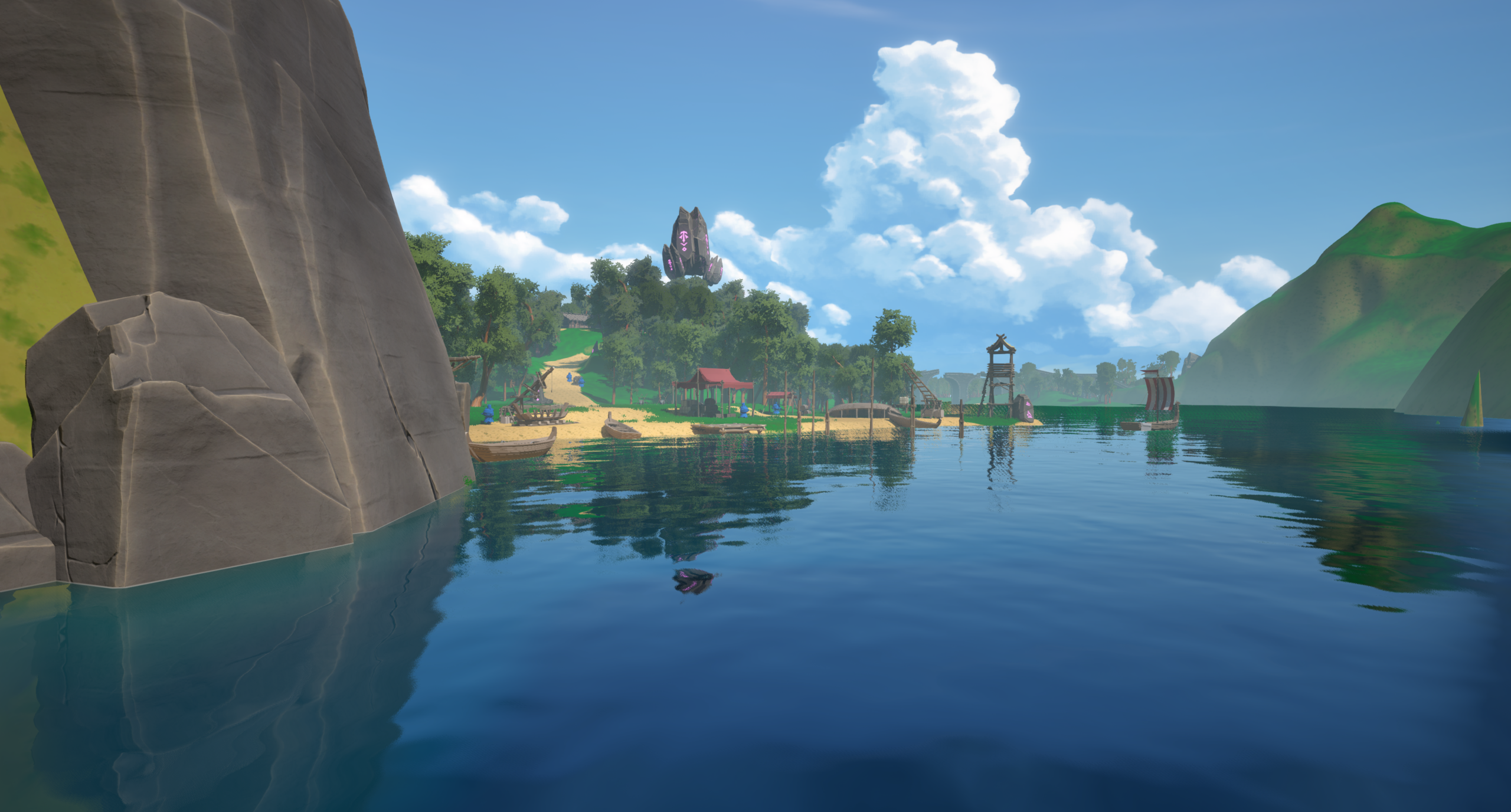
Guiding the player:
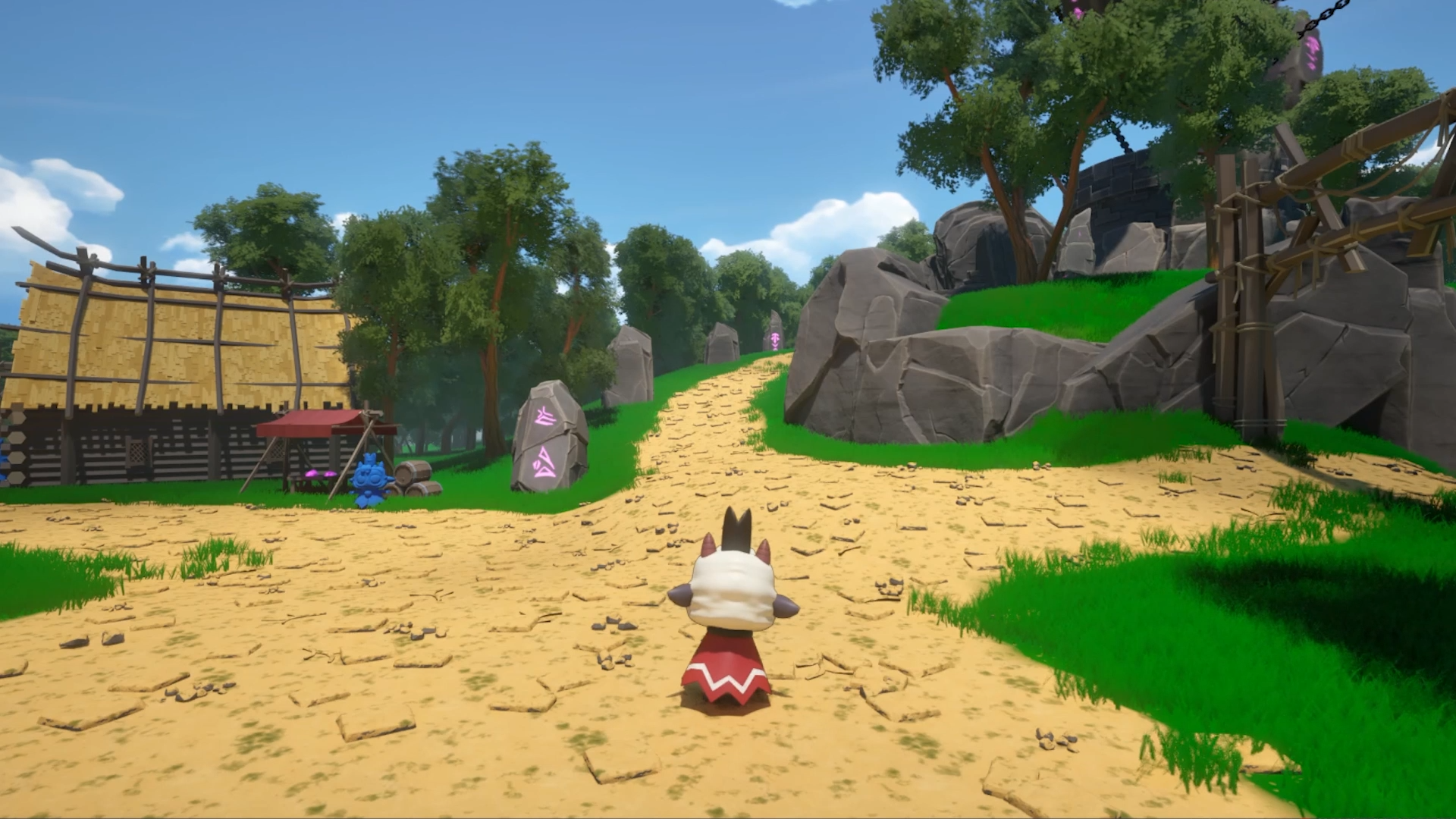
Reflection on Limbos of Narinder:
This project was a valuable experience in both game design and level design. It gave me a deeper understanding of what it takes to design an open world, especially the challenges of integrating management systems and the specific constraints of that kind of environment.
From a level design perspective, it was a true challenge to create a coherent and immersive space in just one week, especially without a traditional blockout and using pre-made assets.
This exercise also reinforced my passion for combining game design and level design—a synergy that pushes me creatively and technically. It’s this mindset that led me to join the Dying Sun project as a level designer.

